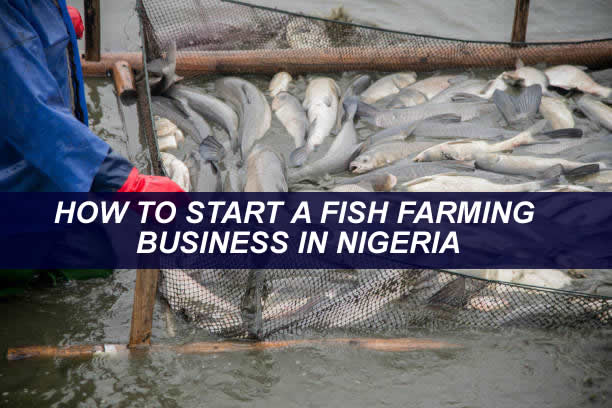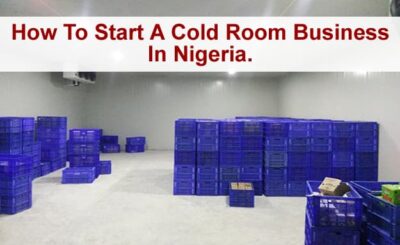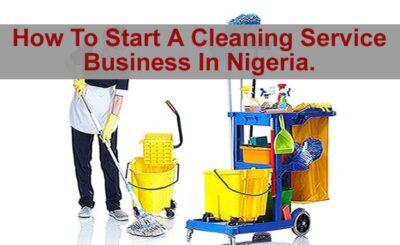One of the most lucrative businesses one can venture into is fish farming business. Fish farming or aquaculture is one of the most common types of farming in Nigeria.
Industrial fish farming, or aquaculture, provides almost half the seafood around the world and this will increase with time as more people are embracing fish farming due to its lucrative nature.
Fish farming business is the system of rearing fishes either sale or for consumption.
A good way to venture into the agriculture industry and generate some good income is through fish farming.
Benefits of Fish Farming
Huge Demand
Fish is one of the main sources of protein, fish is widely consumed on a large scale. Thus, the demand for fish is stable all year round. Fishes are known to grow rapidly. So, investing in a fish farming business will result in huge patronage and source of cash flow.
Affordability
It is a known fact that fishes are cheaper when compared to most meat products and hence, sells faster. It is an attractive venture as it remains the top choice for consumers in terms of affordability.
Rapid Growth
The growth pattern of fish is fast. This singular characteristic of fishes ensures that fish farmers can harvest and sell in a short time.
Low Cost of Set-Up
Fish farms are easy to set up. It can be setup in residential areas as well as on a large scale.
you can also combine Fish farming with any type of farming.
Fish farming business is one of the most lucrative agricultural business one can venture into.

Methods of Fish Farming
Fish farming may range from ‘backyard’ subsistence ponds to large scale industrial enterprises. you can express Farming systems in terms of input levels.
- Extensive fish farming: In extensive fish farming, inputs such as economic and labor are usually low. The type of feed employed is natural fish. The system’s productivity is relatively low. Fertilizers are used to increase fertility and thus fish production.
- Semi-Intensive fish farming: This involves higher labor and feed costs, as well as higher fish yields, compared to the extensive fish farming method. It requires a moderate level of inputs and fish production is increased by the use of fertilizer
- Intensive fish farming: This type of fish farming method involves a high level of inputs and stocking the ponds with as many fish as possible. The type of fish feed employed here is the supplementary feed, while natural feed plays a minor role.
The target market for fish
- Hotels
- Eateries
- Restaurants
- Households
- Exporters
- Frozen food sellers
- READ:HOW TO START A RESTAURANT BUSINESS IN NIGERIA
Types of fish to consider when starting a fish farming business
Tilapia
The tilapia fish is an inexpensive, mild-flavoured fish.
The following attributes of the tilapia fish make it one of the most widely cultured fish in fish farming.
- grow rapidly at warm temperatures;
- good tolerance to poor water quality;
- they eat a wide range of natural food organisms;
- it grows quickly and consumes a cheap vegetarian diet.
Catfish
Catfish is the most common type of fish reared when it comes to fish farming businesses.
This is because the catfish market is a large one as there is always a demand for it all year round.
When it comes to feeding, it is important to feed your catfish with good quality feed to ensure fast growth and optimal size.
Some characteristics of catfish are:
- It is widely acceptable;
- It can be cultivated anywhere;
- Catfish breathe fresh air from the atmosphere;
- Catfish can survive harsh climatic and water conditions;
- can be processed either for domestic or export purposes;
- It can survive and grow in brackish and low oxygen water.
Mackerel (Titus)
This is by far the most popular fish in Nigerian market but so sad it’s not farmed.
All Mackerel Fish are “wild caught” but some farmer in Nigeria are considering the possibility of creating artificial salty water that will be similar to sea water where mackerel can only survive.
Can this deep blue sea fish specie be cultivated artificially?
Only time will tell but for now, you have to focus your attention to Catfish and Tilapia
What You Need To Get Started In Fish Farming
1. Secure a Land
Any location is good since fish doesn’t cause any environmental disturbance. Look for land where you can get it cheap and buy.
Depending on the capacity you want to operate on, half plot of land is just good enough for average fish farm.
However, you may go for something bigger like full plot or two if you can afford it probably for convenience sake.
If you already have a compound with leftover space you thing can accommodate two or three ponds, you may use it.
2. Construct Ponds
You need to engage the service of expert pond construction engineer or you go to another fish farm to get the specification and construction requirements.
The plumbing work must be properly done to ensure proper drainage.
3. Dig a Borehole
Adequate water supply is the lifeblood of fish farm and lack of it may result to disaster because water need to be changed on regular interval.
Naturally available sources of water such as borehole and river water is the most suitable. Rain water and tap water from chemically treated source is not recommended for fish cultivation.
4. Install Overhead Tank
This is the water reservoir from which water is supplied to your ponds.
This tank has to be connected to your ponds through plumbing system to make it convenient for water to flow into your ponds when needed.
READ: HOW TO START A FREELANCE WRITING BUSINESS IN NIGERIA
5. Get Juvenile Fish
Get your juvenile from another farm that specializes in supplying it.
You need to go for the high yield specie of catfish or tilapia and make sure you are getting it from a healthy farm.
6. Get Training
Not the kind of training you get from one day seminars; you need to get attached to a fish farm for proper apprenticeship.
For you to properly learn this trade, you need at least two months training on this.
Remember that your investment is at stake, trial and error is not good in business except you have unlimited funds to experiment with.
7. Aeration Devices
Aeration is of vital importance in fish farming. Water quality is vital to the financial health and productivity of fish farming. Aeration devices are to ensure an adequate supply of oxygen to the fish. Aeration devices also make it easier to recycle water after removing impurities
8. Net or Seine Reels
Nets and seine reels are a large wall of netting deployed around an entire area or school of fish. The seine reels and nets are used in harvesting fish from the pond or river as the case may be.
9. Handling and Grading Equipment
Handling and grading equipment is used to grade and separate fish according to their sizes.
Two types of fish grading equipment are:
- Manual fish graders: Manual fish graders are made of boxes that are fitted with different sized screens, each relating to a range of physical fish size. It allows small fishes to go through the screen while retaining the larger ones in the box.
- Mechanical fish graders: Mechanical fish graders is a machine that is used in grading fish into different size.
10. Water Testing Kit
A Water testing kit is a must-have item in fish farming. Water testing kits are used to measure important parameters in aquaculture.
Some testing methods use reagents and color discs to make a visual determination of the parameter concentration.
Other testing methods use reagents and titration procedures to measure parameter concentration.
Water quality parameters such as; Dissolved oxygen, temperature level and pH are monitored and kept at acceptable ranges to achieve the best results in fish farming.
11. Source of water
Adequate water supply is essential for the success of a fish farm and lack of it may result in disaster because water needs to be changed at regular interval.
Naturally available sources of water such as borehole and river water are the most suitable.
However, rainwater and water from a chemically treated source like tap water are not recommended for fish farming.
READ: HOW TO START A PURE WATER BUSINESS IN NIGERIA
12. Water Tank
This is to serve as a water reservoir from which water is supplied to the ponds.
The water tank is connected to the fish ponds through a plumbing system to make it convenient for water to flow into the ponds when needed.
13. Fingerlings
- The life cycle of a fish starts with an egg.
- The egg hatches into what is called a yolk sac.
- The larva stage begins when the fish has absorbed the yolk and starts feeding for itself.
- The fry is the development stage of fish immediately after the larva stage.
- When the fish gets bigger and looks very much like an adult, it is considered a fingerling.
- The fingerling is the development stage of fish following the fry stage and continuing into the first three to four months of life.
- There is also the yearling which is the development stage of fish following the fingerling stage and lasting until approximately one year of age.
The development stage of a fish after fingerling is what we refer to as juvenile.
The best practice if one is starting a fish farming business is to buy either fingerlings or juveniles as this will save you from the headaches of mortality.
There are fish farmers that specialize in hatching fingerlings and selling juveniles. It is important to get your fingerlings and juveniles from reputable fish hatcheries.
Once the fish matures and can reproduce and lay eggs, it becomes an adult.
Fish Feeds
An important part of the commercial fish farming business is feeding.
Farmers should ensure they provide fishes with high quality and nutritious feeds.
High quality feeds not only ensures maximum production, but it also helps to keep the fish healthy. Fish feeds occur in the form of granules or pellets.
They provide the nutrition to fishes in a stable and concentrated form, enabling the fish to feed efficiently and grow to their full potential.
Fish feeds are combined with other ingredients like vegetable proteins, cereal grains, vitamins and minerals and formed into feed pellets.
TYPES OF FISH FEEDS
There are different types of fish feeds available to fish farmers namely:
Natural Fish Feed: This is found naturally in the pond. This include; detritus, bacteria, plankton, worms, insects, snails, aquatic plants and fish (yes, fish eat fish if they`re hungry).
Natural fish feeds are naturally in the pond. They may include bacteria, plankton, worms, insects, snails, aquatic plants, molluscs and smaller fishes.
Variety of natural fish feeds are found in water bodies. Their presence depends on the productivity of the water body.
The demand for natural food varies from species to species and between the age group of fishes. Natural fish feeds have high protein and fat content, which promote the growth of fishes.
Supplementary Fish Feed: This usually includes cheap materials locally available such as terrestrial plants, maize, bone powder, kitchen wastes or agricultural by-products.
Complete Fish Feed: Complete fish feeds are made from a mixture of carefully selected ingredients to provide all the nutrients necessary for the fish to grow well.
They are made by experts who understand the perfect formula for the fish at a different stage.
Harvesting
After a while, the fishes become suitable for harvesting.
Harvesting of fishes depends on the fish species. Once the fishes are of marketing age you can harvest.
Harvesting of fish is done by the aid of nets or by draining water from the pond. Harvesting should be done when in the morning or late afternoon when the temperature is low.
Harvested fishes can be sold as:
Fresh fishes
Dried fishes
Smoked
Feasibility Study For Standard Fish Farming
This feasibility study prepared for a catfish farm capacity of 10,000 and fingerlings of high breed catfish where to be stocked.
The expenses from pond construction to marketing is considered. The farm is to have 10 concrete ponds of flow through system and each pond is to contains 1,000 stocked catfish.
Cost of Constructing Each Pond is as Follows
- Each pond is 3m x 2.5m by 1.4m, each pond consumes 210 blocks and each bag of cement for 30 blocks. Hence 210 x 10 = 2,100 blocks. 2,100/30 = 70 bags of cement needed. 2000 x 70 = 140,000 naira.
- 4trips of sand used = 7,000×4 = N28,000
- 2trips of gravel = 32,000x 2 = N64,00
- Cost of labour = N150,00
- Cost of plumbing (inlet and outlet facility) = N100,000.
- The cost of bore hole = N150,000.
- Cost of treatment = N50,000.
- The cost of high breed fingerlings 30×10,000 = N300,000.
- Cost of feeding from day one to maturity stage is 200 bags of foreign feed = N1,000,000.
- After the average weight of the fish was 1.7kg. And it was sold at 800 naira each. The output was 800×9800 fishes, due to 200 mortality. 800 x 9800 = N7,840,000.
- Input is N3.25’million. The profit is N4.59 million after six months of culture.
Following this cost analysis, you can easily invest N3 million and expect good turnover within six months of harvest and sell.
CONCLUSION
There is no doubt that fish farming is among the list of lucrative businesses in Nigeria.
You need to get it right by drawing complete business plan and following it to the later.
You need to apply good management skill and follow the acceptable standard.
If you do all these, you are sure to make good profit from your fish farming business in Nigeria, Kenya, Ghana, South Africa or where else you choose to set it up.






